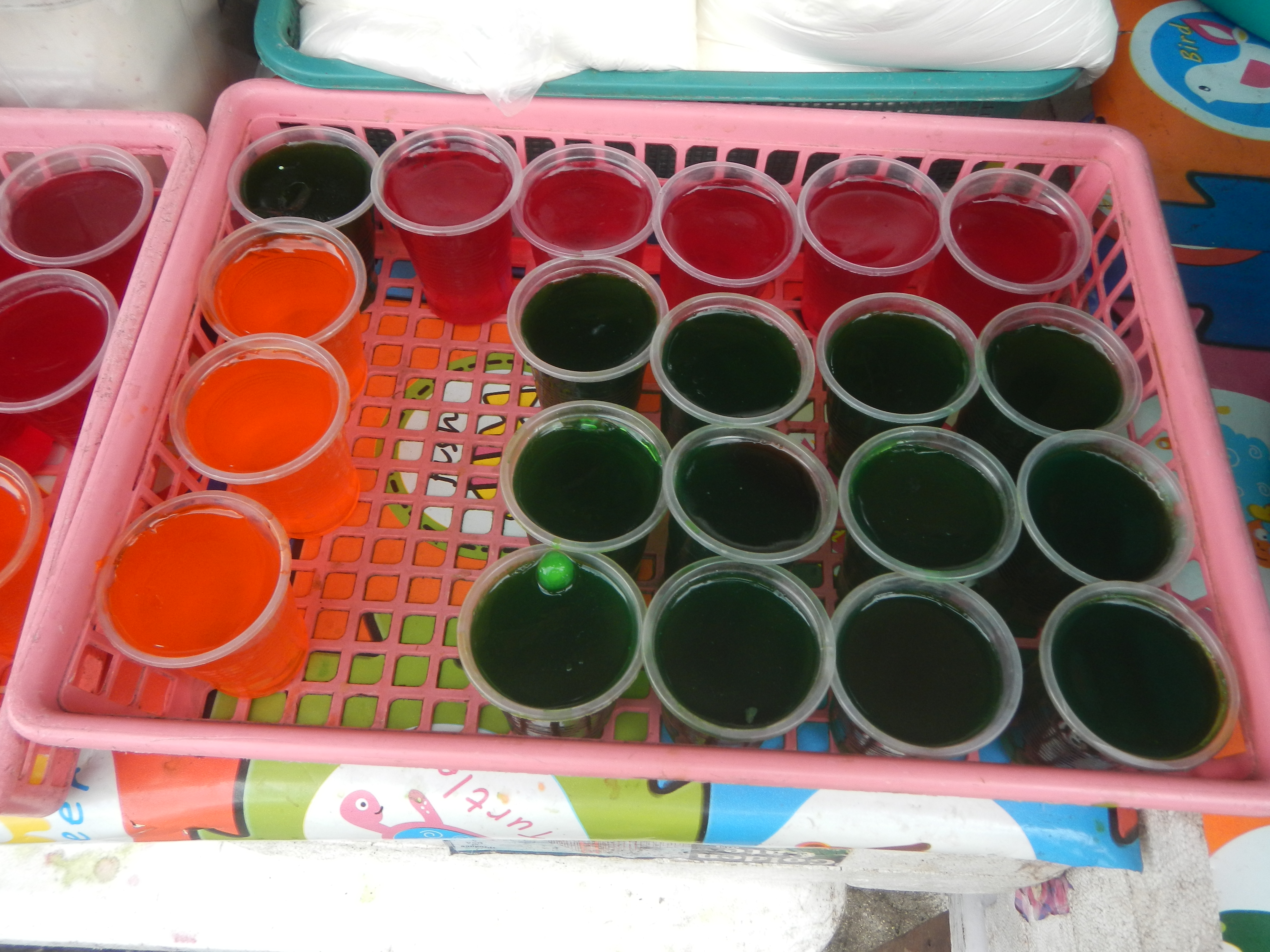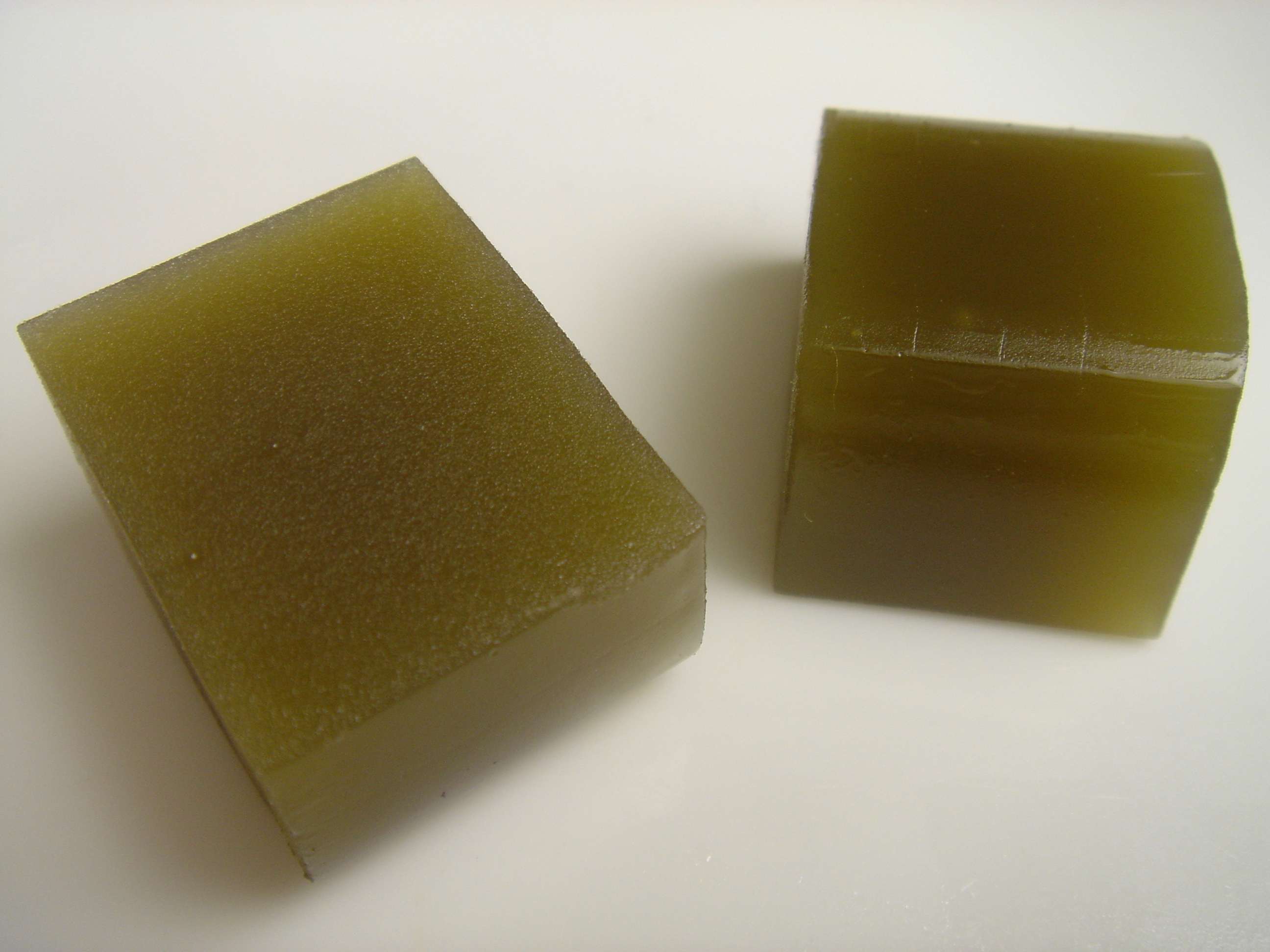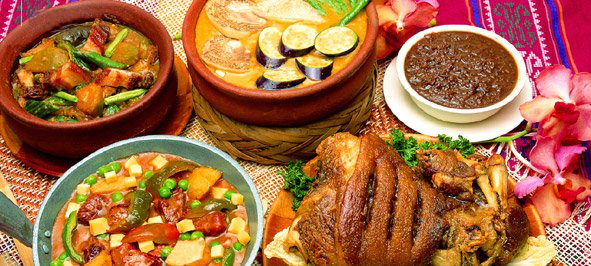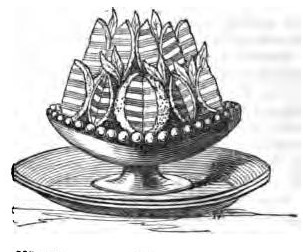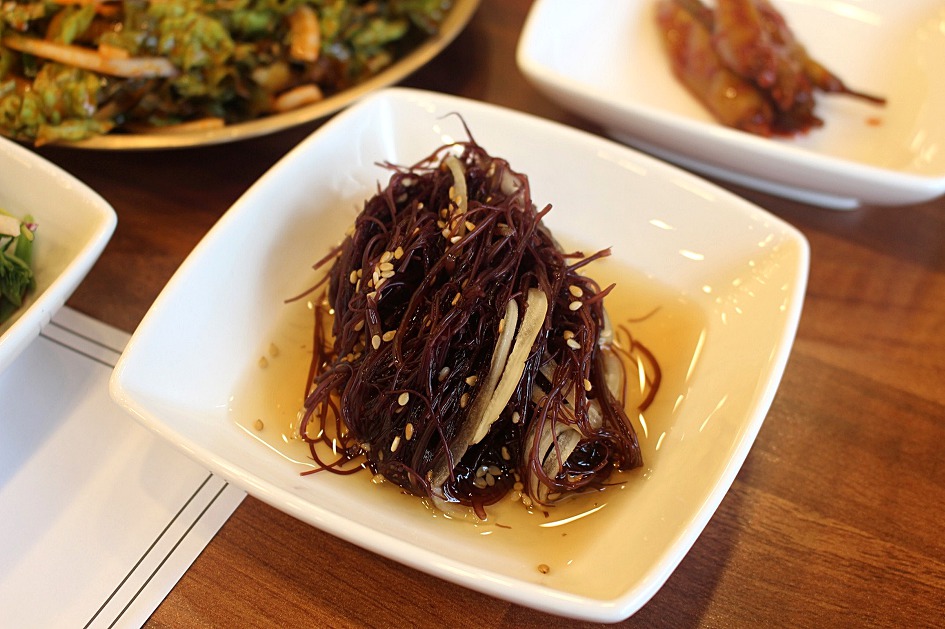|
Gulaman
''Gulaman'', in Filipino cuisine, is a bar, or powdered form, of dried agar or carrageenan extracted from edible seaweed used to make jelly-like desserts. In common usage, it also usually refers to the refreshment '' sago't gulaman'', sometimes referred to as '' samalamig'', sold at roadside stalls and vendors. History '' Gracilaria'', which produces agar, is known as , , , or in Tagalog and in other languages in the northern Philippines. It has been harvested and used as food for centuries, eaten both fresh or sun-dried and turned into jellies. The earliest historical attestation is from the '' Vocabulario de la lengua tagala'' (1754) by the Jesuit priests Juan de Noceda and Pedro de Sanlucar, where ''golaman'' or ''gulaman'' was defined as ''"una yerva, de que se haze conserva a modo de Halea, naze en la mar"'' (modern Spanish orthography: “''una hierva, de que se hace conserva a modo de jalea, nace en la mar''”; “an herb, from which a jam-like preserve is made, g ... [...More Info...] [...Related Items...] OR: [Wikipedia] [Google] [Baidu] [Amazon] |
Sago't Gulaman
Samalamig, also known as palamig, is a collective term for various Filipino sweet chilled beverages that usually include jelly-like ingredients. They come in various flavors, and are commonly sold by street vendors as refreshments. Typical ingredients of the drinks include ''gulaman'' (agar), sago pearls, kaong, tapioca pearls, nata de coco, and coconut (including macapuno). They are usually anglicized as pearl coolers or pearl and jelly coolers. Samalamig may also include various chilled fruit juices (usually with chunks of fruit), chocolate, and coffee drinks, regardless if jellies are added, that are also typically sold by samalamig vendors. Name The name "samálamig" comes from ''sa'', meaning "for; to; at", and ''malamíg'', an adjective meaning "cold, chilly" in Tagalog. "Sa malamig" may thus loosely mean "for cold (drinks); at a cold place; chilled". "Sa malamig" might have come from the calls of ambulant vendors, telling people to come and get cold drinks, i.e. "it ... [...More Info...] [...Related Items...] OR: [Wikipedia] [Google] [Baidu] [Amazon] |
Agar
Agar ( or ), or agar-agar, is a jelly-like substance consisting of polysaccharides obtained from the cell walls of some species of red algae, primarily from " ogonori" and " tengusa". As found in nature, agar is a mixture of two components, the linear polysaccharide agarose and a heterogeneous mixture of smaller molecules called agaropectin. It forms the supporting structure in the cell walls of certain species of algae and is released on boiling. These algae are known as agarophytes, belonging to the Rhodophyta (red algae) phylum. The processing of food-grade agar removes the agaropectin, and the commercial product is essentially pure agarose. Agar has been used as an ingredient in desserts throughout Asia and also as a solid substrate to contain culture media for microbiological work. Agar can be used as a laxative; an appetite suppressant; a vegan substitute for gelatin; a thickener for soups; in fruit preserves, ice cream, and other desserts; as a clarifying ... [...More Info...] [...Related Items...] OR: [Wikipedia] [Google] [Baidu] [Amazon] |
Filipino Cuisine
Filipino cuisine is composed of the cuisines of more than a hundred distinct Ethnic groups in the Philippines, ethnolinguistic groups found throughout the Philippines, Philippine archipelago. A majority of mainstream Filipino dishes that comprise Filipino cuisine are from the food traditions of various ethnolinguistic groups and tribes of the archipelago, including the Ilocano people, Ilocano, Pangasinan people, Pangasinan, Kapampangan people, Kapampangan, Tagalog people, Tagalog, Bicolano people, Bicolano, Visayan, Chavacano, and Maranao people, Maranao ethnolinguistic groups. The dishes associated with these groups evolved over the centuries from a largely indigenous (largely Austronesian peoples, Austronesian) base shared with maritime Southeast Asia with varied influences from Chinese cuisine, Chinese, Spanish cuisine, Spanish, and American cuisine, American cuisines, in line with the major waves of influence that had enriched the cultures of the archipelago, and adapted us ... [...More Info...] [...Related Items...] OR: [Wikipedia] [Google] [Baidu] [Amazon] |
Gelatin Dessert
Gelatin desserts are desserts made with a sweetened and flavoured processed collagen product (gelatin), which makes the dessert "set" from a liquid to a soft elastic solid gel. This kind of dessert was first recorded as "jelly" by Hannah Glasse in her 18th-century book ''The Art of Cookery'', appearing in a layer of trifle. Jelly recipes are included in the 19th-century cookbooks of English food writers Eliza Acton and Mrs Beeton. Jelly can be made by combining plain gelatin with other ingredients or by using a premixed blend of gelatin with additives. Fully prepared gelatin desserts are sold in a variety of forms, ranging from large decorative shapes to individual serving cups. Popular brands of premixed gelatin include Aeroplane Jelly in Australia, Hartley's (formerly Rowntree's) in the United Kingdom, and Jell-O from Kraft Foods and Royal from Jel Sert in North America. In the United States and Canada, this dessert is known by the genericized trademark "jello". History ... [...More Info...] [...Related Items...] OR: [Wikipedia] [Google] [Baidu] [Amazon] |
Edible Seaweed
Edible seaweed, or sea vegetables, are seaweeds that can be eaten and used for culinary purposes. They typically contain high amounts of fiber. They may belong to one of several groups of multicellular algae: the red algae, green algae, and brown algae. Seaweeds are also harvested or cultivated for the extraction of polysaccharides such as alginate, agar and carrageenan, gelatinous substances collectively known as hydrocolloids or phycocolloids. Hydrocolloids have attained commercial significance, especially in food production as food additives. The food industry exploits the gelling, water-retention, emulsifying and other physical properties of these hydrocolloids. Most edible seaweeds are marine algae whereas most freshwater algae are toxic. Some marine algae contain acids that irritate the digestion canal, while others can have a laxative and electrolyte-balancing effect. Most marine macroalgae are nontoxic in normal quantities, but members of the genus '' Lyngbya'' a ... [...More Info...] [...Related Items...] OR: [Wikipedia] [Google] [Baidu] [Amazon] |
Buko Pandan
Buko salad, usually anglicized as young coconut salad, is a Filipino fruit salad dessert made from strips of fresh young coconut (''buko'') with sweetened milk or cream and various other ingredients. It is one of the most popular and ubiquitous Filipino desserts served during celebrations and '' fiestas''. By changing the ratio of milk, ''buko salad'' desserts can also become beverages (usually chilled or with shaved ice), known generally as '' samalamig''. A frozen dessert version of the dish is known as ice buko. Variants Buko salad can have many variations as it can incorporate numerous other ingredients ranging from fruits, ''gulaman'' (agar) jellies, sago, kaong, tapioca pearls, ''nata de coco'', macapuno, and others. Some versions however are popular enough to be considered as distinct subtypes. They include: Buko halo Buko halo or buko halo-halo is a combination of buko salad and '' halo-halo'' desserts, usually served directly on a coconut shell. It differs fr ... [...More Info...] [...Related Items...] OR: [Wikipedia] [Google] [Baidu] [Amazon] |
Carrageenan
Carrageenans or carrageenins ( ; ) are a family of natural linear sulfation, sulfated polysaccharides. They are extracted from red algae, red edible seaweeds. Carrageenans are widely used in the food industry, for their gelling, thickening, and stabilizing properties. Their main application is in dairy and meat products, due to their strong binding to food proteins. Carrageenans have emerged as a promising candidate in tissue engineering and regenerative medicine applications as they resemble animal glycosaminoglycans (GAGs). They are used for tissue engineering, wound coverage, and drug delivery. Carrageenans contain 15–40% ester-sulfate content, which makes them anionic polysaccharides. They can be mainly categorized into three classes based on their sulfate content. Kappa-carrageenan has one sulfate group per disaccharide, iota-carrageenan has two, and lambda-carrageenan has three. A common seaweed used for manufacturing the hydrophilic colloids to produce carrageenan is ... [...More Info...] [...Related Items...] OR: [Wikipedia] [Google] [Baidu] [Amazon] |
Gracilaria
''Gracilaria'', also known as irish moss or ogonori, is a genus of red algae in the family Gracilariaceae. It is notable for its economic importance as an agarophyte meaning that it is used to make agar, as well as its use as a food for humans and various species of shellfish. Various species in the genus are cultivated among Asia, South America, Africa and Oceania. They produce over 90% of the world's agar. Taxonomy ''Gracilaria'' contains the following subtaxa: *'' Gracilaria abbottiana'' M.D.Hoyle *'' Gracilaria abyssalis'' Gurgel & Yoneshigue-Valentin *'' Gracilaria aculeata'' (Hering) Papenfuss *'' Gracilaria aggregata'' Hooker f. & Harvey *'' Gracilaria ambigua'' Greville *'' Gracilaria apiculata'' P.Crouan & H.Crouan ** ''Gracilaria apiculata'' subsp. ''candelabriformis'' Gurgel, Fredericq & J.N.Norris *'' Gracilaria apiculifera'' J.Agardh ** ''Gracilaria arcuata'' f. ''rhizophora'' Børgesen ** ''Gracilaria arcuata'' var. ''attenuata'' Umamaheswara Rao ** ''Gracilaria ... [...More Info...] [...Related Items...] OR: [Wikipedia] [Google] [Baidu] [Amazon] |
Augustinians
Augustinians are members of several religious orders that follow the Rule of Saint Augustine, written about 400 A.D. by Augustine of Hippo. There are two distinct types of Augustinians in Catholic religious orders dating back to the 12th–13th centuries: * Various congregations of Canons Regular also follow the Rule of Saint Augustine, embrace the evangelical counsels and lead a semi-monastic life, while remaining committed to pastoral care appropriate to their primary vocation as priests. They generally form one large community which might serve parishes in the vicinity, and are organized into autonomous congregations. * Several orders of friars who live a mixed religious life of contemplation and apostolic ministry. The largest and most familiar is the Order of Saint Augustine (OSA), founded in 1244 and originally known as the Hermits of Saint Augustine (OESA). They are commonly known as the Austin Friars in England. Two other orders, the Order of Augustinian Recollects ... [...More Info...] [...Related Items...] OR: [Wikipedia] [Google] [Baidu] [Amazon] |
